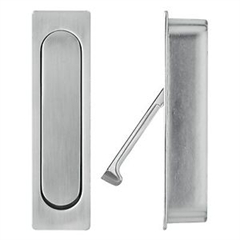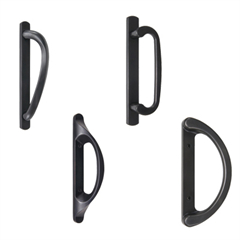The future of door locks is likely to involve advancements in technology and security, aiming to provide convenience, connectivity, and enhanced protection. Here are some potential trends and developments that could shape the future of door locks:
- Smart Locks and Home Automation: Smart locks are already gaining popularity, allowing homeowners to control their locks remotely via smartphone apps. This trend is likely to continue, with more integration into home automation systems, voice assistants (like Alexa and Google Assistant), and the Internet of Things (IoT) ecosystem. These locks can also provide activity logs, temporary access for guests, and remote locking and unlocking.
- Biometric Locks: Biometric authentication, such as fingerprint, facial recognition, and iris scanning, is becoming more prevalent in security systems. We can expect to see these technologies integrated into door locks for more secure and convenient access.Advanced Encryption and Security Features: As smart locks become more connected, security will be a paramount concern. Future locks may incorporate advanced encryption methods to prevent hacking and unauthorized access.
- Keyless Entry Solutions: Traditional keys are likely to become less common as keyless entry solutions continue to evolve. Keypad entry, smartphone-based unlocking, and wearable devices could replace traditional keys for many homeowners.
- Artificial Intelligence and Machine Learning: Door locks could incorporate AI and machine learning algorithms to adapt to users’ behaviors and routines. For instance, they could automatically lock the door when you leave or unlock it when you return.
- Physical and Digital Integration: Future door locks might seamlessly integrate physical and digital security, allowing users to switch between traditional key access and digital methods based on their preferences and needs.
- Emergency Response Integration: Smart locks could be designed to integrate with emergency response systems, allowing quick access for authorized personnel during emergencies while maintaining high security levels.
- Energy Efficiency: Future locks could be designed with energy efficiency in mind, using low-power technologies and integrating with smart home systems to optimize energy usage.
- Augmented Reality and Virtual Reality: Augmented reality (AR) or virtual reality (VR) could play a role in the installation, maintenance, or troubleshooting of door locks. Users might be able to visualize how a new lock fits on their door or receive step-by-step guidance through AR or VR interfaces.
- Environmental Adaptability: Door locks could become more adaptable to changing environmental conditions, such as extreme weather. This could involve the use of more durable and weather-resistant materials.
- Sustainability and Eco-Friendly Designs: Future locks might incorporate eco-friendly materials and manufacturing processes, contributing to a more sustainable living environment.
It’s important to note that while these trends offer exciting possibilities, there will also be challenges, including privacy concerns, potential vulnerabilities in connected systems, and the need for standardized security protocols. As technology continues to advance, collaboration between security experts, manufacturers, and regulatory bodies will be crucial to ensuring the safety and effectiveness of future door lock innovations.








